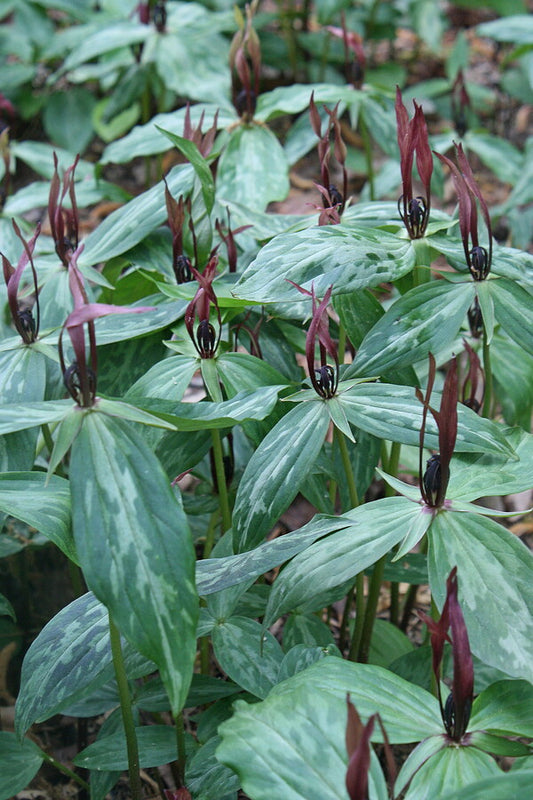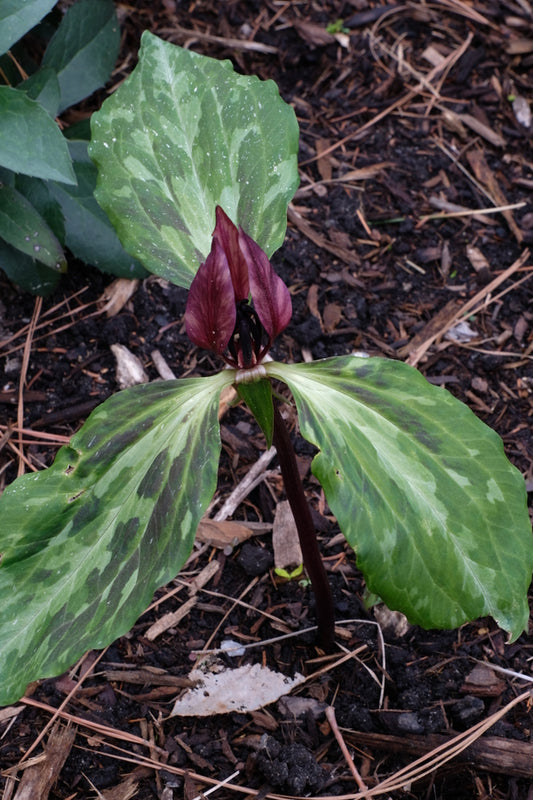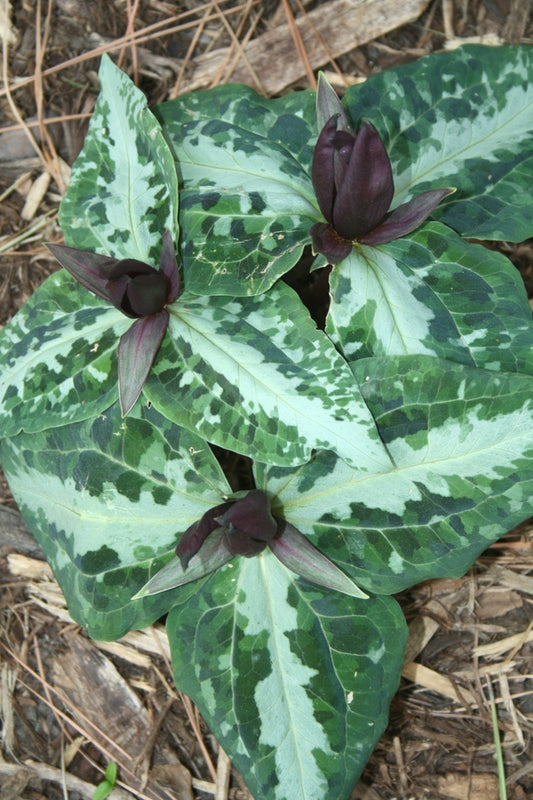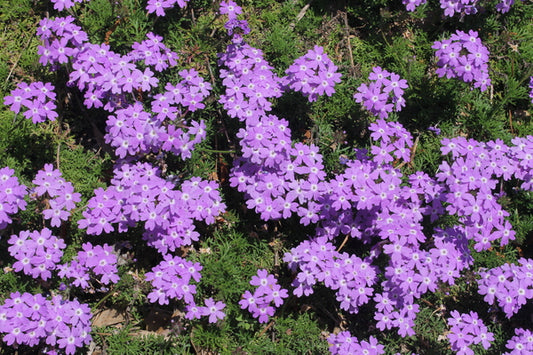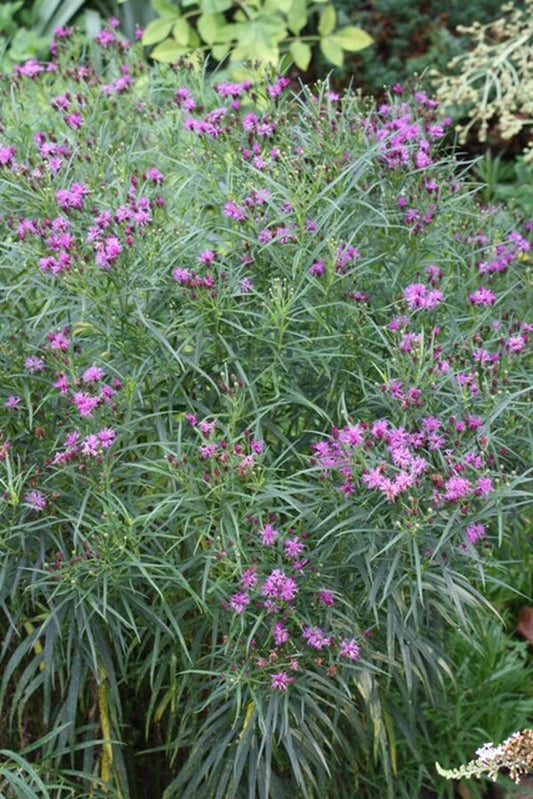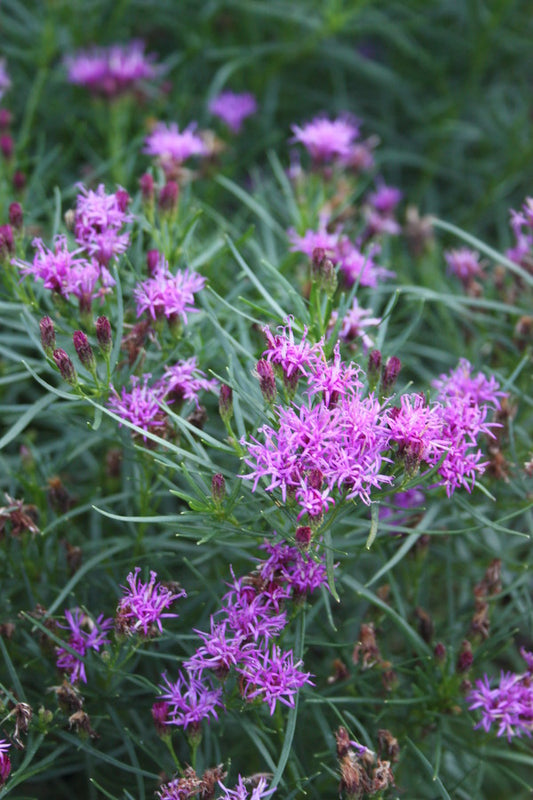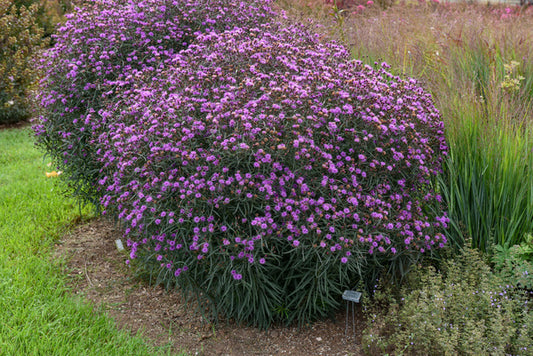Throughout history the color violet has symbolized many different ideas across various cultures including royalty, luxury, vanity, spirituality, creativity, healing, modesty, faithfulness, and wisdom. Try planting violet flowering plants with other complimentary colors to create a wonderful color scheme.
-
Trillium lancifolium 'Close Knit Family'
Item #: 18682
Zones: 6a to 9b, possibly colder
Dormancy: Summer, Fall
Height: 10" tall
Culture: Light Shade
Origin: United States Hybrid
Pot Size: 3.5" pot (24 fl. oz/0.7 L)
Regular price $30.00Regular priceUnit price per -
Trillium lancifolium 'Shotgun Wedding'
Item #: 1465
Zones: 6a to 9b, possibly colder
Dormancy: Summer, Fall
Height: 10" tall
Culture: Light Shade
Origin: United States Hybrid
Pot Size: 3.5" pot (24 fl. oz/0.7 L)
Regular price $28.00Regular priceUnit price per -
Trillium x recurvifolium 'Love Shack'
Item #: 16645
Zones: 5a to 9b
Dormancy: Summer, Fall
Height: 12" tall
Culture: Light Shade
Origin: United States Hybrid
Pot Size: 3.5" pot (24 fl. oz/0.7 L)
Regular price $30.00Regular priceUnit price per -
Trillium underwoodii
Item #: 2973
Zones: 6a to 9b
Dormancy: Summer, Fall
Height: 8" tall
Culture: Part Sun to Light Shade
Origin: United States
Pot Size: 3.5" pot (24 fl. oz/0.7 L)
Regular price $37.00Regular priceUnit price per -
Verbena catharinae 'Lavender Frappe'
Item #: 9573
Zones: 7b to 10b, at least
Dormancy: Evergreen
Height: 1" tall
Culture: Sun
Origin: Brazil
Pot Size: 3.5" pot (24 fl. oz/0.7 L)
Regular price $21.00Regular priceUnit price per -
Vernonia angustifolia 'Plum Peachy'
Item #: 6206
Zones: 5a to 8b
Dormancy: Winter
Height: 48" tall
Culture: Sun
Origin: United States
Pot Size: 3.5" pot (24 fl. oz/0.7 L)
Regular price $24.00Regular priceUnit price per -
Vernonia lettermanii
Item #: 6670
Zones: 4a to 9b
Dormancy: Winter
Height: 24" tall
Culture: Sun
Origin: United States
Pot Size: 3.5" pot (24 fl. oz/0.7 L)
Regular price $22.00Regular priceUnit price per -
Vernonia 'Violet Night' PPAF
Item #: 18529
Zones: 4a to 9b
Dormancy: Winter
Height: 48" tall
Culture: Sun
Origin: United States Hybrid
Pot Size: 3.5" pot (24 fl. oz/0.7 L)
Regular price $22.00Regular priceUnit price per
More Information About Violet Flowering Plants
The word "violet" has its origins in the Latin word "viola," which referred to the flower of the same name. The word "viola" is derived from the Greek word "ion," meaning "violet" or "purple." This eventually evolved into the Latin "violāceus," which means "violet colored." Over time, the word "viola" came to be associated not only with the flower but also with the color itself. From Latin, the word entered various European languages, including English, retaining its association with the flower and the color.
Violet is one of the earliest colors used by humans and traces of violet pigment derived from manganese have been discovered on Neolithic cave paintings dating as far back as 25,000 years. Later, ancient Egyptians and Romans sourced violet die from the secretions of the murex snail native to the Mediterranean region. Though the process was tedious and labor intensive, the resulting Tyrian purple die was far more brilliant and long-lasting than purples and violets from botanical sources. The enormous expense of producing the pigment made violet the color of royalty and other elite well into the Middle Ages.
Most people only think of violets when considering violet flowers and for good reason. Today, the genus Viola encompasses as many as 600 species of annual and perennial flowers but there are so many more choices if you want to add a bit of violet to your gardening palette.
Violet Flowering Plants in the Garden
These days the color violet is within reach of everyone, not just royalty, and we think every garden can use some. Violet flowers add brilliant color and pair well with a large variety of other flowering perennials.
Violet flowering perennials are available for nearly any type of culture. For the woodland shade garden, try asarum or aspidistra. If you need additional color in the sun, buddleia and geranium are great choices. Phlox is a fantastic evergreen groundcover that flowers in winter and has lovely shades of pinks, lavenders, and violets.
Try using violet flowering plants as a bold border, for mass plantings, or in mixed flower beds with other complimentary colors like yellow or pink to create a wonderful color scheme.





